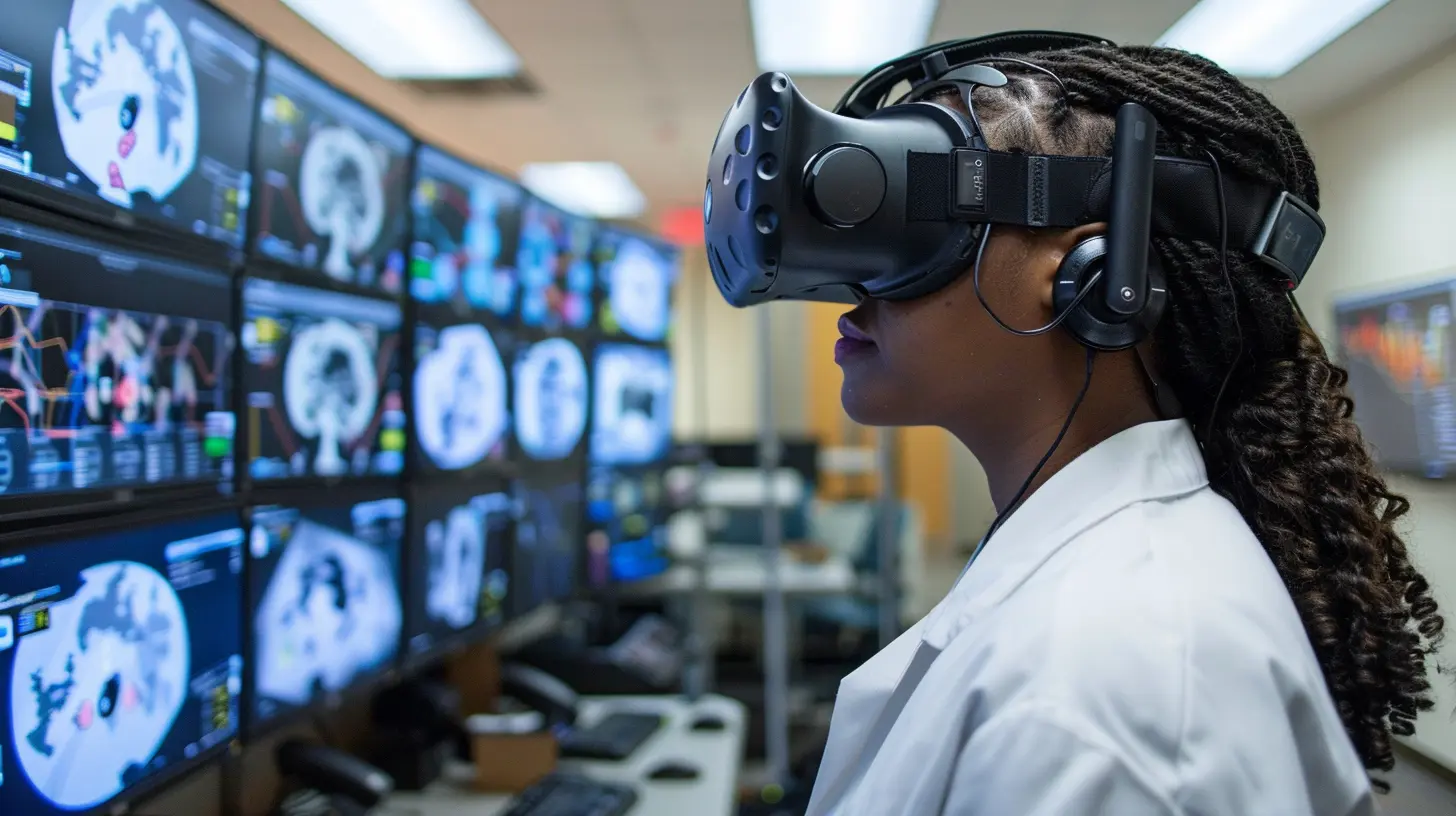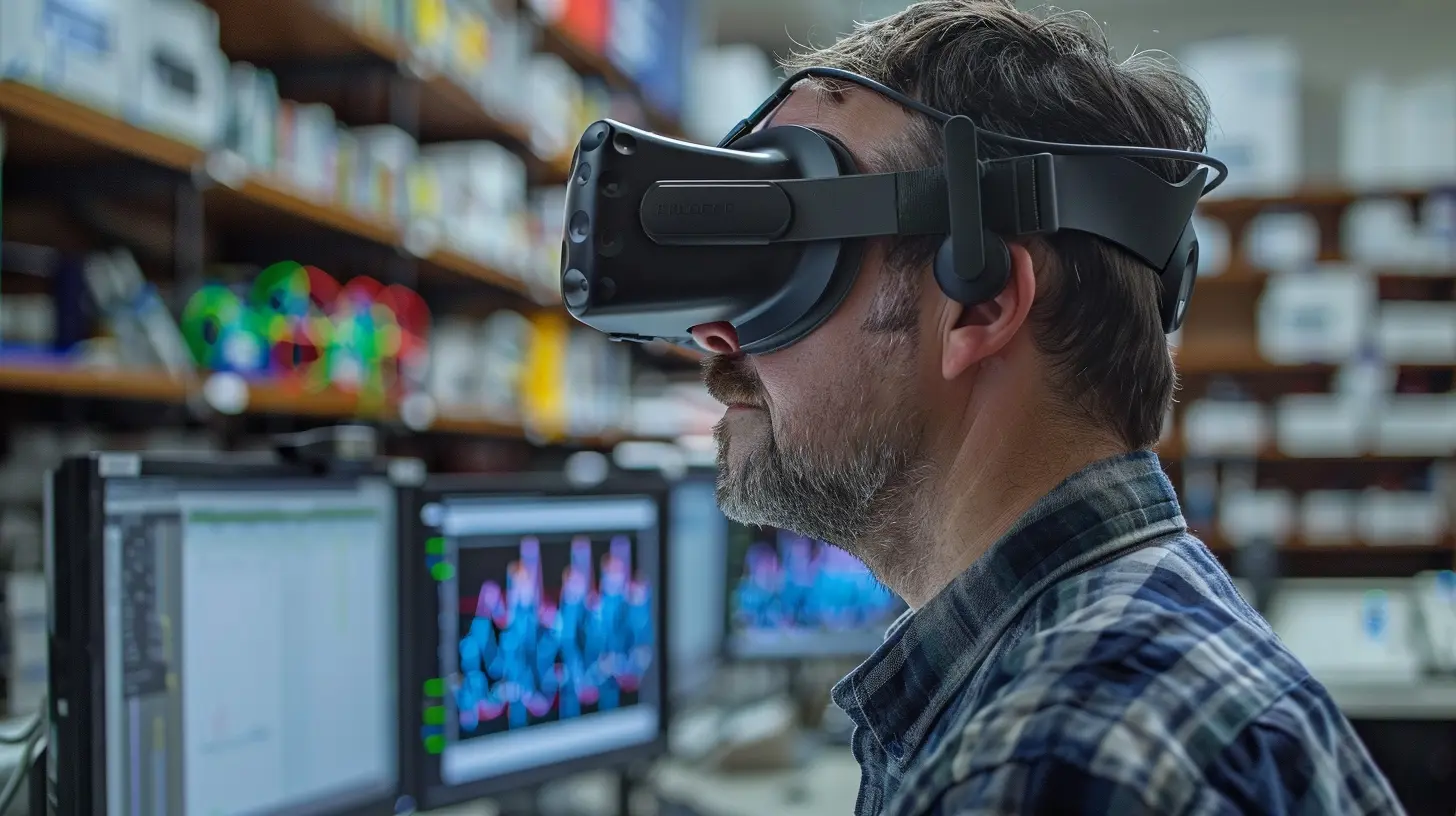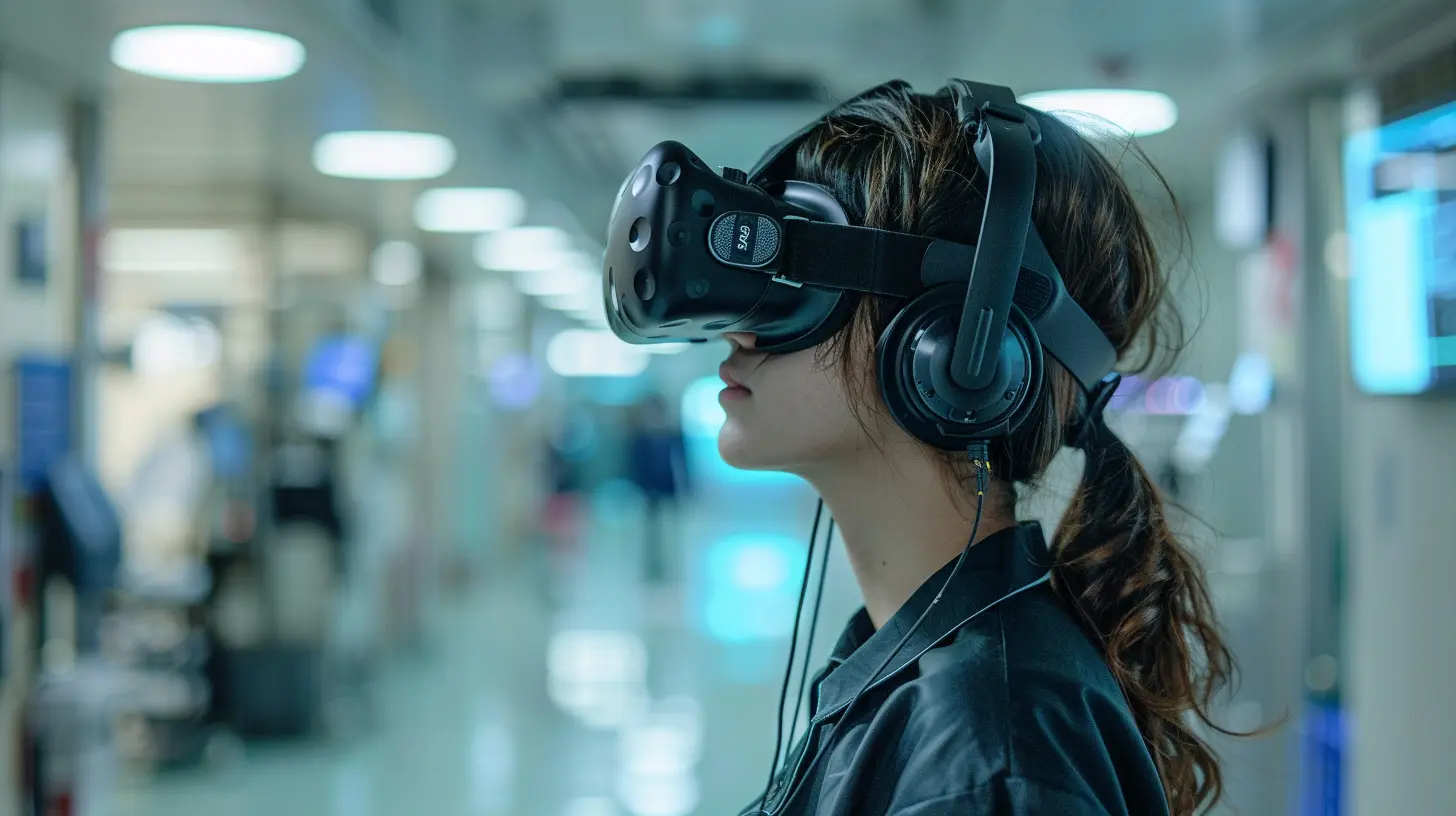How Virtual Reality is Helping Scientists Visualize Complex Data
29 August 2025
Imagine you’re trying to understand the inner workings of a black hole or trying to decode the human brain’s neural pathways. Now imagine doing that while squinting at a flat graph on a screen, like trying to fold a fitted sheet with your eyes closed. Not ideal, right?
That’s where virtual reality (VR) makes its grand entrance—gloves off, headset on. It’s not just for gamers or teens dodging virtual bullets anymore. Scientists across the globe are diving into VR to give their data that much-needed third dimension. We're talking about fully immersive environments where data points float around you like constellations, and you explore information like you're in a sci-fi movie. Cool, right?
In this article, we're going to take a fun, yet informative dive into how VR is helping scientists make sense of mind-bendingly complex data. So grab your digital surfboard—we’re about to ride a wave of innovation.
Why Just Look at Data, When You Can Step Inside It?
Let’s face it—data is getting... complicated. We’re talking terabytes upon terabytes, spread across dimensions that don’t even exist in regular space-time. Try plotting that on an Excel sheet and you’ll feel your soul leaving your body.Enter Virtual Reality, the technological lovechild of science fiction and hardcore engineering.
VR allows scientists to step inside their data—literally. With a VR headset, data isn’t just dots and lines anymore. It’s an immersive 3D environment that you can walk through, twist around, and zoom into. Suddenly, that chaotic RNA structure or multi-layered climate model turns into a digital playground of insight.
Scientists + VR = Mind-Blown Discoveries
So how exactly are scientists using VR? It’s way more than just nerds in goggles geeking out—though that part is still true. Here are a few jaw-dropping ways VR is changing the data game.1. Understanding the Universe… One VR Star at a Time
Astrophysicists deal with things we can barely wrap our minds around—black holes, galaxies, cosmic radiation. Try visualizing a supernova explosion using static graphs. Not helpful.With VR, scientists can simulate and navigate through these phenomena. They can actually “walk” through models of star systems using real-time data from telescopes, seeing how materials swirl, collapse, and explode. It’s like Google Maps—but for the universe.
2. Brain Surgery (Without the Freaky Part)
Neuroscientists are using VR to step inside the human brain. Yep, you heard that right. With massive amounts of data from MRIs and fMRI scans, VR lets researchers view brain connectivity like 3D spiderwebs of thought and logic.Instead of trying to picture how the amygdala connects to the prefrontal cortex from flat images, scientists can literally trace neural pathways through a virtual brain. It’s like being on a guided tour through the mind—but with less Freud and more physics.
3. Climate Modeling That Doesn’t Suck the Life Out of You
Climate data is notoriously monstrous. Think thousands of variables—temperature, pressure, wind, ocean currents—all interacting over decades. 2D models oversimplify it; spreadsheets drown you in numbers.Using VR, climate scientists can create immersive global models. They can fly through the atmosphere, dive into oceans, see storms swirl in real-time simulations. It turns data into an experience, helping researchers see patterns that would otherwise be buried in complexity.
The Secret Sauce: Immersion = Insight
Let’s be real—our brains are wired for spatial understanding. We’re better at dodging flying dodgeballs than interpreting bar charts. VR taps into that strength.Data in 3D = Patterns That Pop
By converting raw numbers into immersive environments, VR makes patterns more visible—like clustering, correlations, and anomalies. Suddenly, that “blip” in the graph isn't just noise; it's a signal shouting, "Dig here!"Better Collaboration (And Fewer Boring Zoom Calls)
Multi-user VR platforms let scientists across the world meet in the same virtual space. Not just a screen share, but a full-on collaborative environment where everyone can interact with the data simultaneously. You can high-five a colleague in Paris while examining protein structures in real-time. Try doing that with Google Sheets.
But Wait... Isn’t VR Expensive and Complicated?
Ah, the elephant in the room. VR used to be the stuff of million-dollar labs and corporate innovation departments. But not anymore, friend.Thanks to devices like the Oculus Quest 2 and a plethora of open-source platforms, high-quality VR is now super accessible. You don’t need a PhD in code to get started, either. Tools like Unity, VMD, and Unreal Engine offer user-friendly ways to build and visualize data-rich environments.
Even NASA’s on board—they’ve been using VR for everything from space mission planning to Mars surface simulations. If it’s good enough for rocket scientists, it’s probably good enough for your data, right?
From Jurassic Park to Data Park: A Quick Throwback
Let’s go full pop culture for a second. Remember the scene in Jurassic Park where the kid uses a 3D visualization to walk through the DNA of a raptor? Okay, maybe you don’t. But that’s basically where we’re at with VR and science.Instead of decoding dinosaurs, we’re decoding genomes, galaxies, and geophysical patterns. It’s like turning your lab into a holodeck—and who wouldn’t want that?
Interactive Possibilities: Data You Can Feel
One of the most exciting developments? Haptic feedback. Scientists are now developing gloves and suits that let you “feel” the data. Imagine reaching out and touching the surface of a protein, feeling its spikes and grooves. Not only is that incredibly cool, but it helps with intuitive understanding and memory retention.Plus, let’s be honest: it sounds like something straight out of Iron Man.
Teaching and Training: The Next Generation of Data Nerds
VR is also transforming education and training. Complex concepts that used to take weeks to understand through textbooks can now be explored interactively in minutes.Medical students perform virtual surgeries. Engineering students explore bridges before building them. And young scientists? They start thinking in dimensions way beyond flat whiteboards.
Honestly, it’s like giving your brain a jetpack.
The Good, The Bad, and The Glitchy
Of course, VR isn’t perfect. Sometimes, you get motion sickness (hello, virtual vertigo). Sometimes, the software crashes and you’re left staring at the digital void.But hey, even Excel freezes sometimes—and it doesn’t let you fly through a visualized neural network.
The tech is improving fast. Developers and researchers are working hand-in-hand to optimize rendering, lower latency, and make environments more intuitive. We’re not far from VR becoming as standard as PowerPoint (but hopefully, way more fun).
Is This the Future of Scientific Discovery?
Short answer: Heck yes.Long answer: We’re standing on the edge of a paradigm shift. Think about it—this isn’t just a tool; it’s a new language for understanding reality. When data becomes dimensionally rich and experience-based, comprehension skyrockets.
Pretty soon, the question won’t be whether to use VR, but how we ever managed without it.
Final Thoughts: Science Fiction, Meet Science Fact
So here we are. What was once the realm of futuristic fiction—putting on goggles to swim through space or dive into DNA—is now very real, and very practical.Virtual reality isn’t just changing how scientists see data. It’s changing how they think about it, interact with it, and collaborate on it. If you ask us, that’s not just innovation; that’s evolution.
Got data? Step inside it.
all images in this post were generated using AI tools
Category:
Virtual RealityAuthor:

Jerry Graham
Discussion
rate this article
1 comments
Paul McFadden
This article underscores the transformative role of virtual reality in data visualization, enabling scientists to interact with complex datasets intuitively. By immersing themselves in 3D environments, researchers can uncover insights that traditional methods often obscure.
September 6, 2025 at 4:57 AM

Jerry Graham
Thank you for your insightful comment! I'm glad you found the article highlights the potential of virtual reality to enhance data visualization for researchers.


